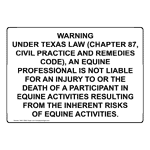
Farm Safety and Health Week: Safety First, Avoid the Worst

Agriculture is still the most dangerous job sector in America, with 574 fatalities, or an equivalent of 23.4 deaths per 100,000 workers, according to data from the U.S. Bureau of Labor Statistics. Fall harvest time can be one of the busiest and most dangerous seasons of the year for the agriculture industry. That’s why the third week of September has been recognized as annual National Farm Safety and Health Week.
Free educational webinars: Safety First, Avoid the Worst
The National Education Center for Agricultural Safety (NECAS) presents two webinars daily related to a focus topic. Webinars start at 11 am and 1 pm CDT. Daily focus topics for this year’s event are:
- Monday – Equipment and Rural Roadway Safety
- Tuesday – Health and Wellness
- Wednesday – Generations of Farming
- Thursday – Confined Spaces
- Friday – ATVs/UTVs
This annual promotion, held annually since 1944, works to raise awareness of safety and health issues on farms, ranches, and in rural communities, and commits to improving the well-being of those who live and work in rural settings.
Farm Safety Signs
 |  |  |  |
The NECAS is dedicated to preventing illnesses, injuries and deaths among farmers and ranchers, agricultural and horticultural workers, their families and their employees. The group offers training and rescue programs on a variety of topics and provides webinars to increase awareness of agricultural safety.
The University of Wisconsin-Madison reports the following factors may increase risk of injury or illness for farm workers:
- Age: injury rates are highest among children age 15 and under and adults over 65.
- Equipment and Machinery: Most farm accidents and fatalities involve machinery. Proper machine guarding and doing equipment maintenance according to manufacturers’ recommendations can help prevent accidents.
- Protective Equipment: Using protective equipment, such as seat belts on tractors, and personal protective equipment (such as gloves, coveralls, boots, hats, aprons, goggles, face shields) could significantly reduce farming injuries.
- Medical care: Hospitals and emergency medical care are typically not readily accessible in rural areas near farms.

